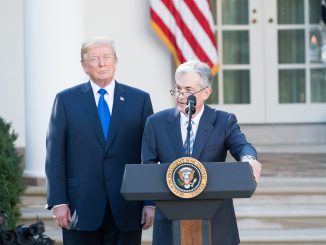Most people agree that the Fed is a conservative institution. But conservative in what sense? Temperamentally, or ideologically? A temperamentally conservative Fed is reluctant to go out on a limb and try new techniques. An ideologically conservative Fed abhors greater than 2% inflation in much the same way that a vampire abhors sunlight. It turns out that it matters a lot whether the Fed is temperamentally conservative, ideologically conservative, or both.
In recent posts, Ryan Avent and Matt Yglesias have criticized the widespread view among Keynesians that the Fed is out of ammunition. People like Larry Summers are skeptical about whether the Fed could stimulate the economy, because doing so would require them to boost inflation. These Keynesians have tended to recommend fiscal stimulus as the only way to boost aggregate demand.
In my view there are two flaws with this argument. First, some Keynesians seem to believe that fiscal stimulus can work without raising inflation expectations, whereas monetary stimulus is only effective at the zero bound if the Fed succeeds in convincing the public that higher inflation is on the way. But both fiscal and monetary policy work through higher AD. And unless the SRAS curve is completely flat, higher AD means higher inflation. The markets know this; hence fiscal stimulus will be expected to work if and only if it boosts inflation expectations. Yes, the early Keynesians believed the SRAS was flat when the economy had lots of slack, but after watching how sensitive oil prices are to growth expectations, I can’t imagine that anyone still believes in a flat SRAS curve.
So if fiscal stimulus is to work, it must boost inflation expectations. This is why we need to know the Fed’s motives. Will the Fed attempt to squash the higher inflation resulting from fiscal stimulus, or will they allow inflation expectations to rise? Most Keynesians seem to have assumed the Fed was temperamentally conservative. That they were reluctant to make the sort of bold moves required to boost AD at the zero bound, but wouldn’t stand in the way of fiscal stimulus. And in fairness, there are statements by Bernanke that seems to support that assumption. But the actions of the Fed strongly suggest otherwise. Consider Fed policy since 2008:
- The Fed started paying IOR for the first time in its history.
- The Fed got involved in bailing out the banking system to an unprecedented extent.
- The Fed got heavily involved in buying MBSs (QE1)
- The Fed did QE2, with longer term bonds
- The Fed did Operation Twist
That doesn’t seem like a timid or cautious Fed to me, that seems quite aggressive. Not at all temperamentally conservative. Now let’s consider evidence for ideological conservatism. Here’s Ryan Avent:
According to the Cleveland Fed’s estimates, 10-year inflation expectations haven’t risen above 2.1% since the end of 2008. At least three times during that span, the Fed has halted or reversed its easing, first by ending its initial asset purchases, then by allowing its balance sheet to contract naturally as securities matured, and then by ending the asset purchases known as QE2. Expectations have remained in check because the Fed has opted not to continue policies that would raise them. The myth of Fed helplessness is just that.
I think that’s exactly right. Ryan is describing a temperamentally ambitious Fed willing to try all sorts of unconventional policies, but which pulls back whenever inflation threatens to exceed 2%. My question to the Keynesians is:
How does fiscal stimulus overcome an ideologically conservative Fed?
I think they have in mind a scenario where the Fed won’t take affirmative moves to kill a recovery, such as raising interest rates. And that may be right. (We’ll see when we actually get a recovery—the FDR-era Fed, the BOJ, and the ECB all raised rates prematurely.) But that’s not the right question. The problem is that the Fed needs to do extraordinary things just to keep inflation from falling well below 2%. And it seems like when inflation rises to 2%, they stop doing those things. That’s ideological conservatism. It may be unintentional on the Fed’s part (I believe it is unintentional on Bernanke’s part) but it means the Fed is not just failing to do its part, it’s actually sabotaging fiscal stimulus.
PS. I’d also note that with an ideologically conservative Fed the most effective fiscal policies (for reducing unemployment) are not at all what progressives would like. You’d need to lower employer-side payroll taxes, lower minimum wages, cut back on the maximum duration of UI benefits, in order to shift aggregate supply to the right. It’s interesting that a Fed dominated by Republicans does policies that make conservative fiscal policy the only effective option. Morgan Warstler’s fantasy.
- Bulenox: Get 45% to 91% OFF ... Use Discount Code: UNO
- Risk Our Money Not Yours | Get 50% to 90% OFF ... Use Discount Code: MMBVBKSM
Disclaimer: This page contains affiliate links. If you choose to make a purchase after clicking a link, we may receive a commission at no additional cost to you. Thank you for your support!




Leave a Reply